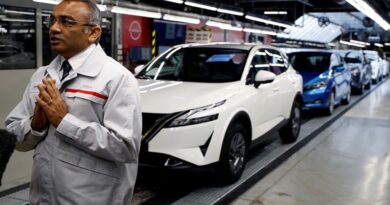Global sales forecast to grow by 6% in 2022 as chip shortage eases in third quarter
Global auto sales will improve somewhat in 2022, analyst firm LMC Automotive said, but semiconductor supply shortages will continue to constrain production at least through the third quarter.
Overall, light vehicle sales are forecast to increase by 6 percent to 85 million, managing director Pete Kelly said Tuesday during LMC’s annual sales and production forecast event.
Gains will be spread evenly by region, LMC said. Europe sales will increase by 7 percent to 17.8 million; North America 6 percent to 18.7 million; China 5 percent to 26.6 million; South America 9 percent to 3.6 million; and the rest of Asia, including India, 7 percent to 15.3 million.
“We’re expecting to see Europe do a bit of a better job in terms of catch up this year, given how poor it was last year” when sales rose just 0.5 percent, Kelly said.
Automakers will continue to struggle to build enough cars to satisfy demand through the first three quarters of this year, Kelly said. Production for 2022 is expected to be 84.9 million vehicles, a big increase from 75.8 million in 2021 – a figure that represents a cut of 10.7 million units from LMC’s earlier forecasts due to the chip shortage, he said.
Ford took the biggest hit among automotive groups, with 2021 production down by 26 percent, representing a loss of 1.26 million units, because of the chip shortage, LMC said. GM lost 21 percent of production, Volkswagen Group lost 13 percent, Stellantis 13 percent and Renault-Nissan 10 percent.
Compared to pre-pandemic levels in 2019, production will be down 12 percent in the first quarter, 5 percent in the second and flat in the third quarter. A rebound will gather force in the fourth quarter, when it will rise by 4 percent compared with 2019.
Full stoppages attributed to the chip shortage should end by the second quarter of this year, with remain production disruptions tied to slower output, LMC said. Approximately 4.8 million units of production will still be lost in 2022, however.
“This year we won’t escape the chip shortage again, but the volume [of disruptions] looks like it will be in the range of half of what it was last year,” Kelly said.
He said LMC was seeing some “positive indicators” and had adjusted its 2022 forecasts upward several percentage points since October.
Overall production will return to 2019 levels (88.7 million units) in 2023, when LMC is predicting volume of 90.2 million vehicles, although output could top 93 million depending on risk factors.
“Demand is far outstripping supply in the auto sector globally, but it’s particularly acute in the mature markets and that’s something that’s going to persist for a while,” Kelly said.”We’ve seen that show in terms of inventory levels.”
Inventory levels, which hit rock bottom in North America in 2021 with just 24 days’ supply in July and September, will stabilize or improve in 2022, Kelly said.
European inventories have hovered between 58 and 70 days’ supply since the second quarter of 2020, LMC said, but in absolute terms, inventories bottomed out in the third quarter of 2021 and are expected to continue to rise throughout 2022.
However, if demand increases as expected, larger inventories do not necessarily mean that the days’ supply will go down.
As a consequence, buyers will continue to have to wait to get the cars they want throughout the year, Kelly said.
“The retail industry wants a more normal business,” he said. They would dearly love to have a full plate of vehicles to be able to sell to people, but they’re just not going to get that this year.”
Source : Autonews.com




